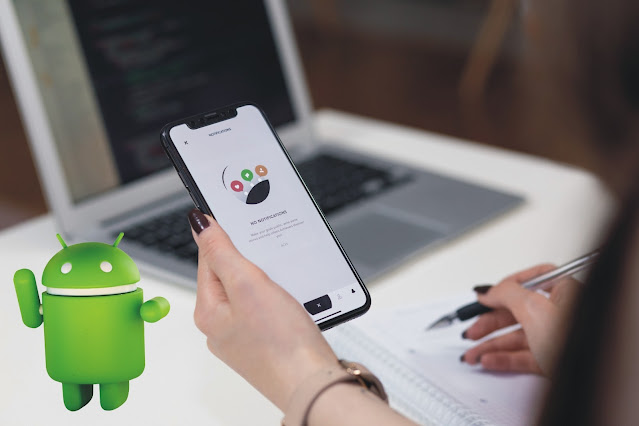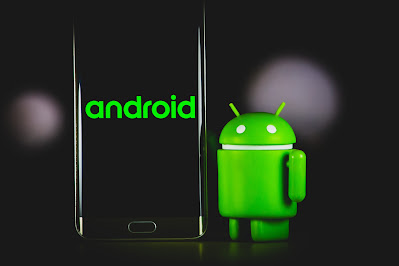This post is
a complete guide to becoming an Android developer, covering everything from the
prerequisites to setting up the development environment, building your first
app, and advanced topics like data storage, networking, and testing. It also
includes best practices for Android development, such as writing clean and
maintainable code, following design patterns, and testing your app thoroughly.
By the end of this guide, you’ll have a solid foundation for building your own
Android apps and the knowledge needed to further develop your skills as an
Android developer.
Introduction
Android
development is the process of creating mobile applications for devices running
the Android operating system. These applications can be designed to run on
smartphones, tablets, smartwatches, and other Android-powered devices. Android
development is carried out using Java or Kotlin programming languages, and
it is supported by the official Android SDK (Software Development Kit).
In today’s
world, where smartphones are ubiquitous, the demand for skilled Android
developers is growing rapidly. Companies around the world are looking for
developers who can create engaging, user-friendly, and reliable mobile apps to
meet the needs of their customers. Therefore, having Android development skills
is a valuable asset for both aspiring and experienced developers who want to
advance their careers.
This guide
will provide a comprehensive overview of the Android development process,
covering all the key concepts, tools, and techniques necessary to become an
Android developer. The guide will also include code examples and practical tips
to help readers understand the material and apply it in their own projects.
Prerequisites
Before
diving into Android development, it’s important to have some basic programming
skills and knowledge of object-oriented programming (OOP). Object-oriented
programming is a paradigm that allows developers to organize code into reusable
objects that interact with one another to achieve a desired outcome. Android
development heavily relies on OOP concepts such as inheritance, encapsulation,
and polymorphism.
Moreover,
having experience with at least one programming language such as Java or Kotlin
is essential. Java is the primary programming language used for Android
development, and Kotlin is an increasingly popular alternative that is fully
supported by the Android platform.
If you’re
new to programming, it’s recommended to start with learning the fundamentals of
programming and then move on to OOP concepts. There are many resources
available online that can help you learn programming and OOP, such as
tutorials, online courses, and books.
In summary,
the prerequisites for becoming an Android developer are:
- Basic
programming knowledge - Understanding
of object-oriented programming - Familiarity
with Java or Kotlin programming languages.
Setting
up the development environment
To start
developing Android applications, you’ll need to set up your development environment.
The Android development environment consists of several tools and frameworks,
the most important of which is Android Studio. Here are the steps for setting
up your development environment:
Installing
Android Studio: You can download and install Android Studio from the official
website. Once downloaded, follow the installation instructions to install
Android Studio on your computer.
Overview of
Android Studio interface and features: After installing Android Studio, you’ll
be greeted with a welcome screen. Here, you can create a new project, open an
existing project, or access other important tools and resources. The Android
Studio interface is divided into several areas, such as the project window, the
code editor, and the preview window.
Creating a
new project: To create a new project, click on “Start a new Android Studio
project” from the welcome screen. You’ll be prompted to provide a project
name, package name, and other details. Once you’ve entered all the required
information, you can choose the type of project you want to create, such as an
empty activity, a basic activity, or a full-screen activity. After selecting
the project type, click “Finish” to create the project.
Congratulations!
You’ve now set up your Android development environment and created a new
Android project in Android Studio. In the next section, we’ll cover the basic
concepts of Android development.
Android
Development Basics
In this
section, we’ll cover some of the basic concepts of Android development that
you’ll need to know to get started with building your own Android applications.
Understanding the Android development architecture: Android applications are built using a layered architecture that includes the application layer, the application framework layer, and the operating system layer. The application layer contains the UI components, such as Activities and Fragments. The application framework layer provides APIs for working with UI components, data storage, and network connectivity. The operating system layer provides services for managing the device hardware and system resources.
Introduction
to Android Components: Android applications are built using four main
components: Activities, Services, Broadcast Receivers, and Content Providers.
Activities represent the UI components of an application, such as screens and
dialogs. Services run in the background and perform tasks that don’t require
user interaction. Broadcast Receivers receive system events and notifications,
and Content Providers provide access to shared data between applications.
Understanding
Android Layouts and Views: Layouts are used to define the UI components of an
Android application. Android provides a number of built-in layout types, such
as LinearLayout, RelativeLayout, and ConstraintLayout, that you can use to
organize your UI components. Views are the individual UI components that are
placed inside a layout. Examples of Views include buttons, text fields, and
images.
Handling
user interactions with Activities and Intents: Activities are used to represent
screens and dialogs in an Android application. You can use Intents to launch
new Activities or to pass data between Activities. For example, you can use an
Intent to launch a new Activity when a user clicks a button, or to pass data
from one screen to another.
These are
just some of the basic concepts of Android development that you’ll need to
know. In the next section, we’ll show you how to build your first Android app
using Android Studio.
Building
your first Android App
In this
section, we’ll walk you through the process of building your first Android app
using Android Studio. We’ll use code examples to demonstrate how to design a
simple UI, handle user input with Views, create a new Activity, and run the app
on an emulator or physical device.
Designing UI
using XML: Android Studio includes a visual layout editor that you can use to
design your app’s UI. The layout editor generates XML code that defines the UI
components of your app. You can also edit the XML code directly if you prefer.
In this example, we’ll use the layout editor to design a simple UI that
includes a button and a text field.
Handling
user input with Views: We’ll add an event listener to the button that listens
for clicks. When the user clicks the button, we’ll get the text from the text
field and display it in a toast message. Here’s the code for the event
listener:
Button button = findViewById(R.id.button);
button.setOnClickListener(new View.OnClickListener() {
@Override
public void onClick(View v) {
EditText textField = findViewById(R.id.textField);
String message = textField.getText().toString();
Toast.makeText(getApplicationContext(), message, Toast.LENGTH_SHORT).show();
}
});
new Activity and connecting it to the UI: We’ll create a new Activity that
displays a message when the user clicks the button. First, we’ll create a new
Java class that extends the Activity class. Then, we’ll connect the new
Activity to the UI by adding a new button that launches the Activity when clicked.
Here’s the code for the new Activity:
public class MessageActivity extends AppCompatActivity {
@Override
protected void onCreate(Bundle savedInstanceState) {
super.onCreate(savedInstanceState);
setContentView(R.layout.activity_message);
Button button = findViewById(R.id.messageButton);
button.setOnClickListener(new View.OnClickListener() {
@Override
public void onClick(View v) {
Toast.makeText(getApplicationContext(), "Hello from MessageActivity!", Toast.LENGTH_SHORT).show();
}
});
}
}
running the app on an emulator or physical device: Finally, we’ll build the app
and run it on an emulator or physical device. To build the app, click on the
“Run” button in Android Studio. You’ll be prompted to select an
emulator or physical device to run the app on. Once you’ve selected a device,
the app will be installed and launched automatically.
Congratulations!
You’ve just built your first Android app using Android Studio. With this
foundation, you can continue learning and building more complex Android
applications.
Advanced
Android Development Topics
In this
section, we’ll cover some advanced topics in Android development that will take
your skills to the next level.
Data Storage
with SQLite: SQLite is a lightweight, file-based database that you can use to
store data in your Android application. It’s built into the Android framework
and provides a simple and efficient way to store structured data. You can use
SQLite to store data locally on the device or to sync data with a remote
server.
Networking
with Retrofit: Retrofit is a popular HTTP client library for Android that makes
it easy to consume RESTful APIs. It allows you to define a Java interface that
describes the API endpoints and methods and generates the necessary code to
make API calls. Retrofit also provides support for handling authentication,
request/response serialization, and error handling.
Using
Android APIs and Libraries: Android provides a wide range of APIs and libraries
that you can use to build more advanced applications. For example, you can use
the Camera API to capture images and videos, the Location API to track the
user’s location, or the Media Player API to play audio and video files. You can
also use third-party libraries to add additional functionality to your app,
such as social media integration or analytics tracking.
Material
Design Guidelines: Material Design is a set of design guidelines and principles
developed by Google that provide a consistent and intuitive user experience
across all Android devices. By following these guidelines, you can create a
visually appealing and user-friendly app that’s easy to navigate and use.
Debugging
and testing the app: Debugging and testing are critical parts of the
development process. Android Studio provides a number of tools for debugging
and testing your app, such as the debugger, the profiler, and the Android
Emulator. You can also use automated testing frameworks, such as Espresso or
Robolectric, to automate testing and ensure that your app works as expected.
These are
just some of the advanced topics in Android development that you can explore as
you continue to build more complex applications. By mastering these topics, you
can create powerful and feature-rich apps that provide a great user experience.
Best
practices for Android Development
In this
section, we’ll cover some best practices that can help you become a better
Android developer.
Writing
clean and maintainable code: Writing clean and maintainable code is essential
for creating high-quality Android apps. It makes your code easier to read,
understand, and maintain over time. Some best practices for writing clean code
include using meaningful variable names, organizing your code into logical
modules or classes, and avoiding long methods or complex conditional
statements.
Following
design patterns: Design patterns are reusable solutions to common programming
problems. They can help you write more efficient and maintainable code by
providing a set of best practices for structuring your code. Some common design
patterns used in Android development include the Model-View-Controller (MVC)
pattern, the Singleton pattern, and the Observer pattern.
Using
version control systems: Version control systems, such as Git, are essential
for managing your codebase and collaborating with other developers. They allow
you to keep track of changes to your code, revert to previous versions if
necessary, and collaborate with others on the same codebase. It’s important to
learn the basics of version control and to use it consistently throughout your
development process.
Documenting
your code: Documenting your code is important for making it more understandable
to other developers. Good documentation should include comments that explain
the purpose of each class, method, or variable, as well as any assumptions or
constraints that apply. You should also consider writing unit tests to validate
your code’s behavior and prevent regressions.
Testing your
app thoroughly: Testing your app is essential for ensuring that it works as
expected and meets the requirements of your users. You should test your app in
a variety of scenarios, including different device configurations, network
conditions, and user input. In addition to manual testing, you can also use
automated testing frameworks, such as Espresso or Robolectric, to automate
testing and catch issues early in the development process.
By following
these best practices, you can create more maintainable, efficient, and
high-quality Android apps.
Conclusion
In
conclusion, this post provided a complete guide to becoming an Android
developer, starting with the prerequisites and setting up the development
environment, moving on to the basics of Android development, and then delving
into more advanced topics and best practices.
We covered
the importance of Android development skills in the current job market, the
basics of programming and object-oriented programming, and the need to become
familiar with Java or Kotlin.
We then went
on to explain how to set up the Android Studio development environment,
provided an overview of the Android development architecture, and introduced
the various Android components, such as Activities, Services, Broadcast Receivers,
and Content Providers.
We also gave
a step-by-step guide to building your first Android app, including designing
the UI with XML, handling user input with Views, and building and running the
app on an emulator or physical device.
We covered
some advanced topics, including Data Storage with SQLite, Networking with
Retrofit, Using Android APIs and Libraries, Material Design Guidelines, and
Debugging and testing the app.
Finally, we
discussed some best practices for Android development, such as writing clean
and maintainable code, following design patterns, using version control
systems, documenting your code, and testing your app thoroughly.
We encourage
you to continue learning and practicing your Android development skills, as
this is an ever-evolving field that requires continuous learning and staying
up-to-date with the latest trends and best practices. There are many resources
available online, including the official Android documentation, online courses,
and online communities where you can interact with other developers and share
knowledge.
We hope this
guide has been helpful in getting you started on your journey to becoming an
Android developer. Happy coding!








.jpg)